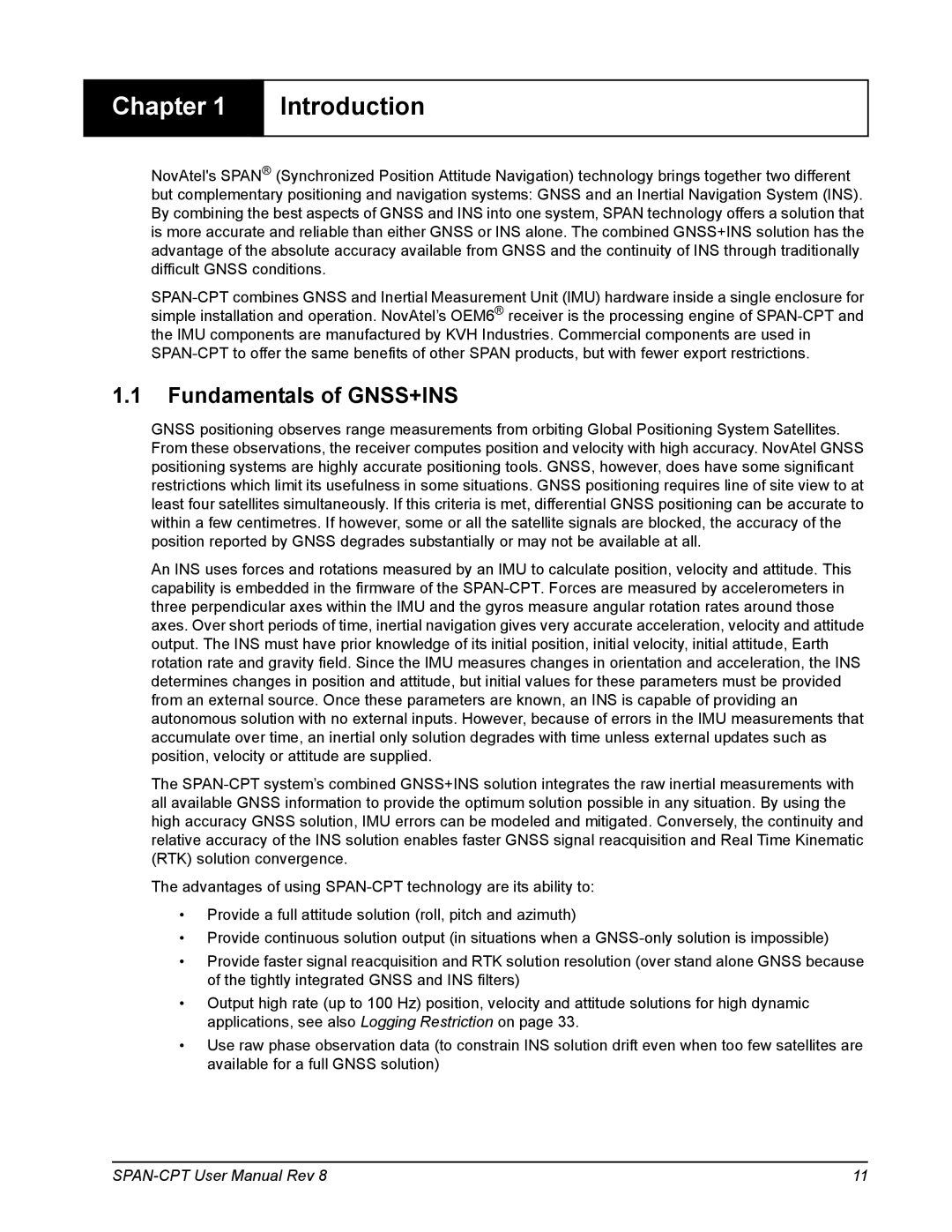
Chapter 1
Introduction
NovAtel's SPAN® (Synchronized Position Attitude Navigation) technology brings together two different but complementary positioning and navigation systems: GNSS and an Inertial Navigation System (INS). By combining the best aspects of GNSS and INS into one system, SPAN technology offers a solution that is more accurate and reliable than either GNSS or INS alone. The combined GNSS+INS solution has the advantage of the absolute accuracy available from GNSS and the continuity of INS through traditionally difficult GNSS conditions.
1.1Fundamentals of GNSS+INS
GNSS positioning observes range measurements from orbiting Global Positioning System Satellites. From these observations, the receiver computes position and velocity with high accuracy. NovAtel GNSS positioning systems are highly accurate positioning tools. GNSS, however, does have some significant restrictions which limit its usefulness in some situations. GNSS positioning requires line of site view to at least four satellites simultaneously. If this criteria is met, differential GNSS positioning can be accurate to within a few centimetres. If however, some or all the satellite signals are blocked, the accuracy of the position reported by GNSS degrades substantially or may not be available at all.
An INS uses forces and rotations measured by an IMU to calculate position, velocity and attitude. This capability is embedded in the firmware of the
The
The advantages of using
•Provide a full attitude solution (roll, pitch and azimuth)
•Provide continuous solution output (in situations when a
•Provide faster signal reacquisition and RTK solution resolution (over stand alone GNSS because of the tightly integrated GNSS and INS filters)
•Output high rate (up to 100 Hz) position, velocity and attitude solutions for high dynamic applications, see also Logging Restriction on page 33.
•Use raw phase observation data (to constrain INS solution drift even when too few satellites are available for a full GNSS solution)
11 |
